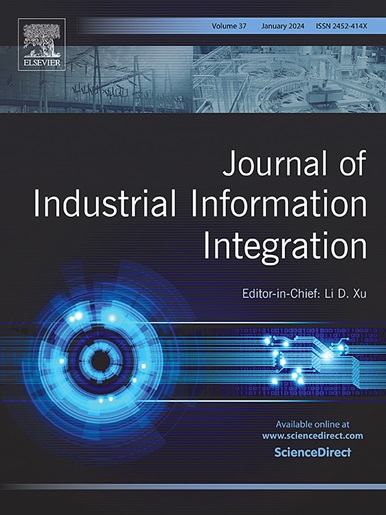具体智能系统中基于图像的视觉伺服实时感知-运动协同设计方法
IF 10.4
1区 计算机科学
Q1 COMPUTER SCIENCE, INTERDISCIPLINARY APPLICATIONS
引用次数: 0
摘要
具身智能系统通过内在感知与环境交互的动态耦合来实现自适应决策,其中运动协调的程度从根本上受到多模态感知和执行器控制闭环优化的约束。为了解决这一问题,本研究将基于图像的视觉伺服(IBVS)重新配置为具身智能框架下的感知-运动协同引擎。首先,构建感知-运动映射模型,利用Mamdani模糊推理实现多轴伺服增益的动态解耦和自适应调节,有效解决了非结构化环境下具身智能系统运动轨迹冗余和视觉特征可见性退化问题;设计了基于多项式衰减函数(PD-CVO)的连续速度观测器,保证了系统运动速度的平稳过渡,有效降低了速度突变引起的动态不平衡风险。实验结果表明,与现有方法相比,该方法将嵌入系统的视觉运动响应效率提高了13.25%,将图像特征中的冗余运动减少了53.63%,并且稳健地保持了相机空间速度的初始连续性。这种基于伺服增益动态调节的体现控制范式为实现柔性制造场景下刀具操纵与环境变形的实时耦合提供了新的理论框架。本文章由计算机程序翻译,如有差异,请以英文原文为准。
A real-time perception–motion codesign method for image-based visual servoing in embodied intelligence systems
The embodied intelligence system achieves adaptive decision-making through the dynamic coupling between intrinsic perception and environmental interaction, wherein the extent of motion coordination is fundamentally constrained by the closed-loop optimization of multimodal perception and actuator control. To solve this problem, this study reconfigures image-based visual servoing (IBVS) into a perception–motion synergy engine within the framework of embodied intelligence. First, a perception–motion mapping model is constructed, in which Mamdani fuzzy inference is employed to achieve dynamic decoupling and adaptive regulation of multi-axis servo gains, which effectively addresses the issues of motion trajectory redundancy and visual feature visibility degradation in embodied intelligent systems operating in unstructured environments. Furthermore, a continuous velocity observer based on a polynomial decay function (PD-CVO) is designed to ensure smooth transitions in system motion velocity, effectively reducing the risk of dynamic imbalance caused by abrupt velocity changes. Experiments show that this method improves the visual-motor response efficiency of the embodied system by 13.25%, reduces redundant motion in image features by 53.63% compared to other state-of-the art approaches, and robustly maintains the initial continuity of the camera’s spatial velocity. This paradigm of embodiment control based on the dynamic adjustment of servo gain provides a new theoretical framework for realizing the real-time coupling of tool manipulation and environment deformation in flexible manufacturing scenarios.
求助全文
通过发布文献求助,成功后即可免费获取论文全文。
去求助
来源期刊

Journal of Industrial Information Integration
Decision Sciences-Information Systems and Management
CiteScore
22.30
自引率
13.40%
发文量
100
期刊介绍:
The Journal of Industrial Information Integration focuses on the industry's transition towards industrial integration and informatization, covering not only hardware and software but also information integration. It serves as a platform for promoting advances in industrial information integration, addressing challenges, issues, and solutions in an interdisciplinary forum for researchers, practitioners, and policy makers.
The Journal of Industrial Information Integration welcomes papers on foundational, technical, and practical aspects of industrial information integration, emphasizing the complex and cross-disciplinary topics that arise in industrial integration. Techniques from mathematical science, computer science, computer engineering, electrical and electronic engineering, manufacturing engineering, and engineering management are crucial in this context.
 求助内容:
求助内容: 应助结果提醒方式:
应助结果提醒方式:


